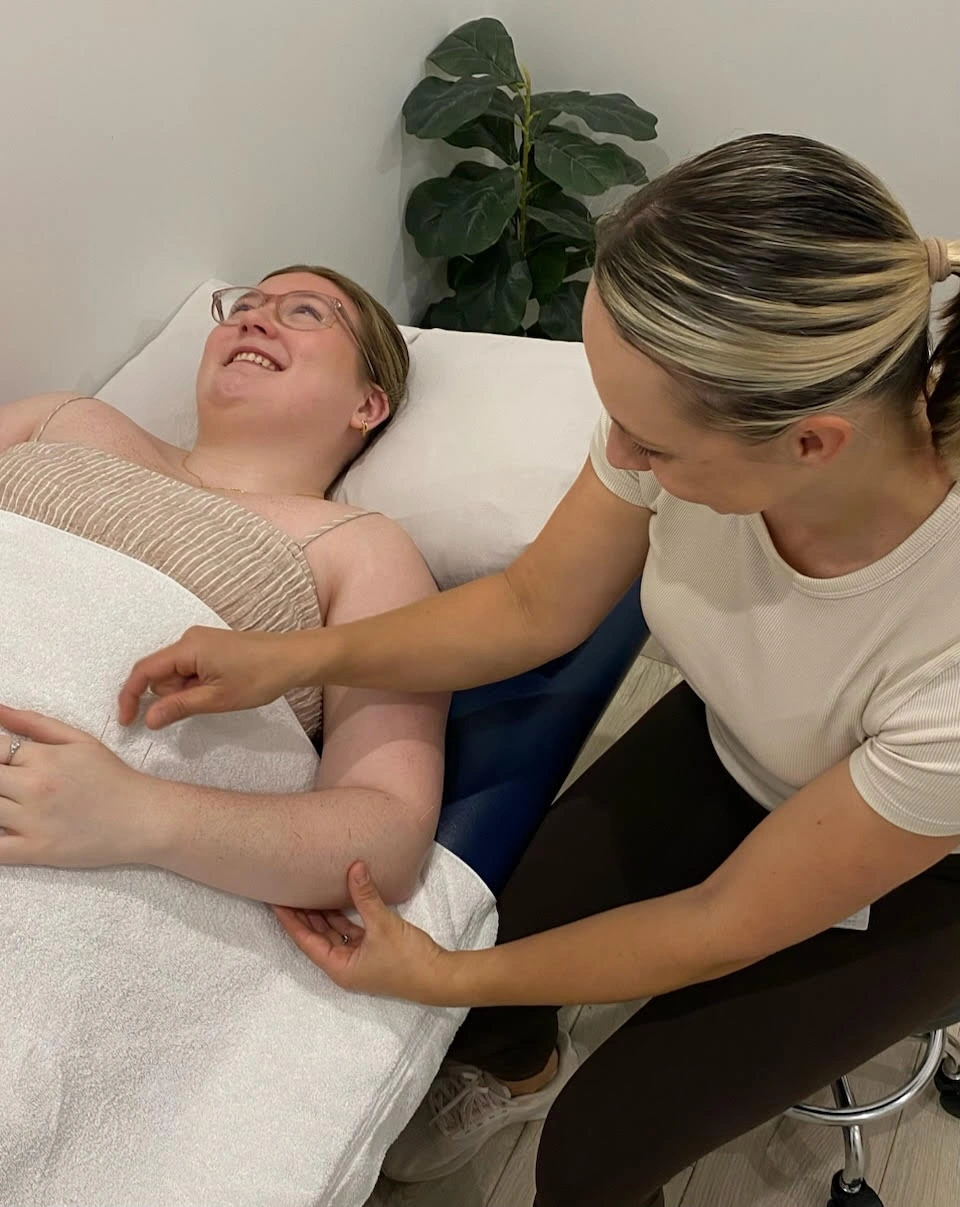

What is Dry Needling?
Dry needling is a specialised physiotherapy technique where very fine, sterile needles are
inserted into trigger points – tight, sensitive spots in muscles that can cause local or referred pain.
The aim is to release muscle tension, reduce pain, and restore normal movement and function.
How does dry needling work?
When a trigger point is stimulated by a needle, it triggers a series of beneficial physiological
responses in the muscle, nervous system, and surrounding tissues:
1. Neurological and nervous system effects:
- The needle stimulates sensory nerve fibres that can inhibit pain signals to the brain.
- Needling promotes the release of the body’s natural pain-relieving chemicals such as endorphins and serotonin, helping reduce pain perception.
- It helps desensitise overactive trigger points and calms nerve pathways that contribute to chronic pain.
2. Muscular effects:
- The mechanical action of the needle disrupts the tight contraction within the muscle fibres, allowing the muscle to relax.
- You may notice a brief, involuntary muscle twitch – this “local twitch response” indicates the trigger point has been effectively released.
3. Circulatory and tissue effects:
- Needle insertion creates a tiny, controlled micro-injury that stimulates local blood flow and healing.
- Increased circulation delivers oxygen and nutrients to the area while promoting collagen and protein formation to support tissue repair.
Who can benefit from dry needling?
Dry needling can be helpful for a wide range of conditions, including:
- Neck and shoulder pain
- Low back pain and sciatica
- Headaches and migraines
- Sports or overuse injuries
- Chronic pain conditions
Your physiotherapist will perform a full assessment to determine whether dry needling is
appropriate for your specific condition.
What to Expect in a Session:
- Your physiotherapist will assess which muscles and trigger points are contributing to
- your pain.
- A thin, sterile needle is inserted into the trigger point.
- You may feel a small pinprick as the needle is inserted.
- You may also feel a brief muscle twitch response, or a deep dull ache during treatment – these are normal signs that the muscle is responding.
- Needles are typically left in for a few seconds to a few minutes.
- After treatment, you may experience some mild soreness and bruising, this usually settles within 24-48 hours.
Dry needling works best as part of a comprehensive physiotherapy plan. Your physiotherapist
may combine it with:
- Manual therapy to restore joint mobility
- A tailored exercise program to improve strength, control and stability
- Education and lifestyle advice to prevent recurrence
Is Dry Needling Safe?
Dry needling is performed by physiotherapists who have completed accredited training in
needling techniques and anatomy. All needles are sterile, single-use, and safely disposed of after each treatment.
Book in with one of our team members to see if it is right for you! Physio Aga has extensive experience with dry needling and we always recommend her for treatment – you can book in with her

